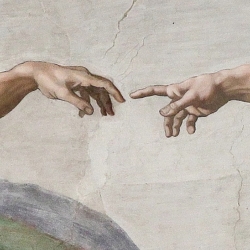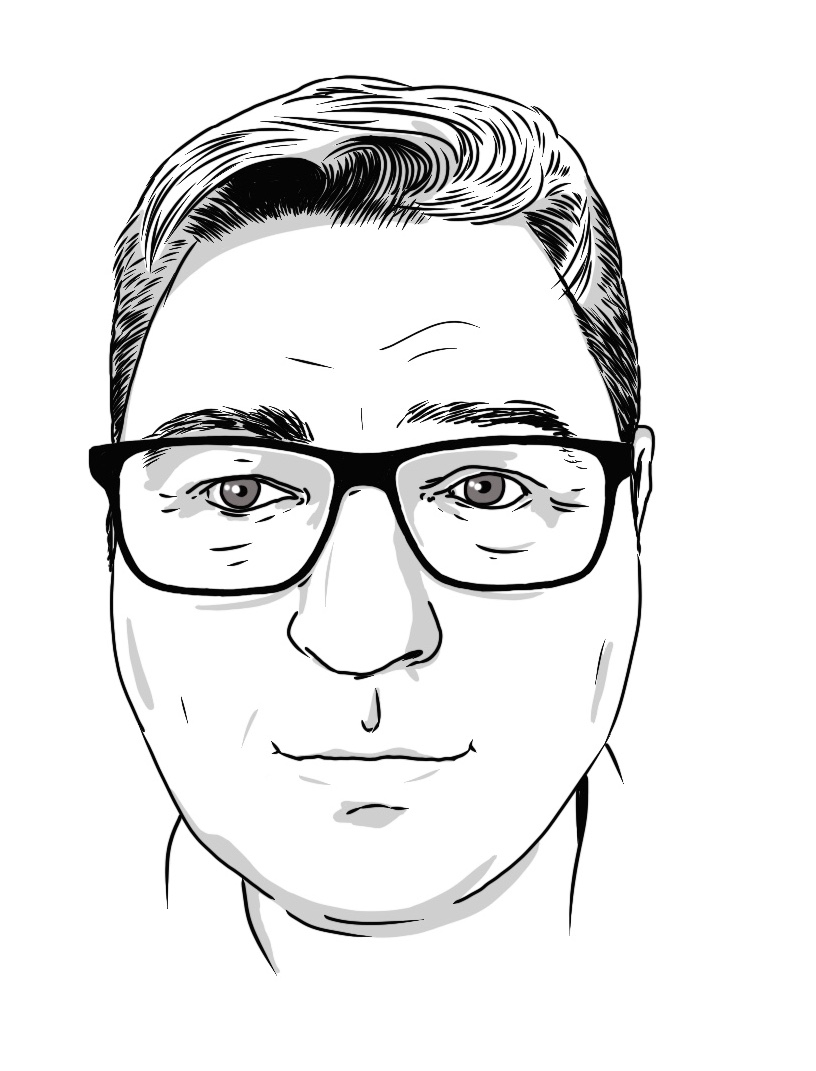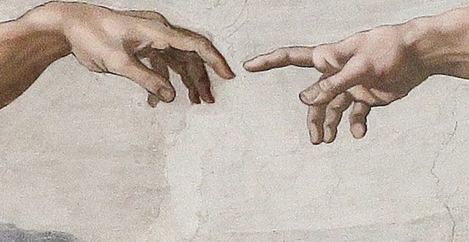March 5, 2024
Finding the spark of creativity in the routine and boredom of every day
 Every day, after a leisurely breakfast in bed and the opening of his post, Roald Dahl would wander down his garden to the grubby little hut crammed with personal paraphernalia he had created. There he would sharpen the six yellow pencils that were always by his side while he worked, settle into an armchair, put his feet up on an old suitcase filled with logs, place an American yellow legal pad of paper onto a makeshift board on his lap and work for two hours.
Every day, after a leisurely breakfast in bed and the opening of his post, Roald Dahl would wander down his garden to the grubby little hut crammed with personal paraphernalia he had created. There he would sharpen the six yellow pencils that were always by his side while he worked, settle into an armchair, put his feet up on an old suitcase filled with logs, place an American yellow legal pad of paper onto a makeshift board on his lap and work for two hours.
He would stop for lunch, typically the same thing every day, have a nap and then return to the hut with a flask of tea for two more hours of uninterrupted work exactly as he had earlier in the day.
In a speech he explained why he did this. “I, like many other writers I know, am always frightened of starting work each morning’, he said. “The reason for this is that when you have to invent something new to write every day of your life, there is always the fear that your inventiveness will fail you and you won’t be able to think of anything at all.”
Dahl is not alone in following a strict routine as a way of fostering his creativity and productivity. Steve Jobs famously wore the same thing every day – an Issey Miyaki black turtleneck and blue jeans – so that he didn’t have to expend energy on choosing what to wear. Barack Obama famously had a wardrobe full of identical suits for the same reason.
[perfectpullquote align=”right” bordertop=”false” cite=”” link=”” color=”” class=”” size=””]Inspiration may strike at any time, but why take the chance when perspiration is more reliable?[/perfectpullquote]
Twyla Tharp wrote a whole book on the subject of routines and creativity called The Creative Habit, in which she writes: “it’s vital to establish some rituals—automatic but decisive patterns of behavior—at the beginning of the creative process, when you are most at peril of turning back, chickening out, giving up, or going the wrong way.”
The reasoning behind all of this is very simple according to Mason Currey the author of 2013’s Daily Rituals – How Artists Work and the follow up Daily Rituals: Women at Work: How Great Women Make Time, Find Inspiration, and Get to Work and backs up the assertions of both Roald Dahl and Twyla Tharp and a host of other creatives who can be found on Currey’s blog dedicated to their daily routines.
The ritual means that things get done. Inspiration may strike at any time, but why take the chance when perspiration is more reliable?
That is not to say that there is no place for serendipity, but that too is often structured in the lives of the most creative and productive people, usually around a walk or some other activity that allows the brain to drift and help to strike the right balance between routine and variety.
Serendipity and routine
We’ve all had plenty of time to ponder the role of routines and variety in our lives over the last year or so. And what we have discovered is that we need to strike a balance there too. Prior to the pandemic, two thirds of people said that the daily commute was the worst part of their day, according to the TUC.
And yet, fake commuting was a thing, reported on by the BBC and in the Wall Street Journal. In most cases this seemed to be a way of recreating a ritual in the new era of work that allows people to structure their time to disconnect from work for their wellbeing and productivity at a very difficult time, but it speaks to an eternal truth.
[perfectpullquote align=”right” bordertop=”false” cite=”” link=”” color=”” class=”” size=””]The daily commute has been the worst part of many people’s day, and yet fake commuting was a thing during the pandemic[/perfectpullquote]
It is something we should remember when we explore new directions in the post COVID world. We already have a great deal of wisdom to drawn on about how people work and what makes them happy and well.
One of those things is finding the right balance between variety and routine. For some time now, workplace commentators have been fond of talking about engineering serendipity as a way of fostering creativity. This is important but as the world’s new generation of fake commuters and old generation of creatures of habit know, sometimes you have to engineer familiarity too.
Perhaps the most famous single act of personal creativity – with apologies to Archimedes – is Mary Godwin’s moment of inspiration for the story of Frankenstein in 1816. It was born from a wet summer in a villa on the shores of Lake Geneva, largely spent with her future husband Percy Shelley, John Polidori and Lord Byron. The poor weather and isolation meant the party had to entertain themselves the best they could.
This included the telling of weird stories, prompted by Byron. After a few days unable to come up with a suitable tale, Mary had what she called a waking dream. “I saw the pale student of unhallowed arts kneeling beside the thing he had put together. I saw the hideous phantasm of a man stretched out, and then, on the working of some powerful engine, show signs of life, and stir with an uneasy, half vital motion. Frightful must it be; for supremely frightful would be the effect of any human endeavour to mock the stupendous mechanism of the Creator of the world.”
This was eventually to grow into the novel for which she is now best known, Frankenstein or, The Modern Prometheus, published two years later. She was just 19 when she completed it.
The story itself is about creation, our inability to own and control the things we bring into existence, and mankind’s hubris. But it also tells us an awful lot about the creative process itself. The story was conceived in the subconscious activity of a creative mind, driven by pressure, the presence of other creatives, the chaotic lives of the companions and – frankly – boredom.
These are all factors we now understand somewhat better than Mary Shelley did at the time. Yet her interest in galvanism, which is the premise of her work, predates the electric light bulb by many years, and her creative process foreshadowed some of the things we now know about how people come up with new ideas. Two kinds of spark.
The use of electricity as a metaphor is apt, not least because creativity doesn’t share many characteristics with productivity. We don’t have more and better ideas just by increasing the amount of work we do.
In fact, according to the business psychologist Adam Grant, it is often procrastination that can lead to creativity. In a Ted Talk, entitled The Surprising Habits of Original Thinkers, the business psychologist Adam Grant identified the challenges associated with fostering creativity, not least that many of the most original thinkers are habitual procrastinators.
Thriving on chaos
It may also be true that too much organisation is anathema to creativity. In his 1883 novel Thus Spoke Zarathustra, the philosopher Friedrich Nietzsche, writes, “I tell you: one must still have chaos in oneself to give birth to a dancing star.” The economist Joseph Schumpeter is still best known for his idea of ‘creative destruction’. Management guru Tom Peters’ best known book remains Thriving on Chaos. Albert Einstein once said: “If a cluttered desk is a sign of a cluttered mind, of what, then, is an empty desk a sign?”
Yet, chaos might be the wrong word to describe what is going on here and it is a subject about which we need some insight when it comes to designing work and workplaces. In his book On Knowing: Essays for the Left Hand, the psychologist Jerome Bruner instead writes of the ‘antic spirit’, the ‘silent process’ of creativity and especially ‘effective surprise’ which might provide better ways of illuminating the issue.
[perfectpullquote align=”right” bordertop=”false” cite=”” link=”” color=”” class=”” size=””]One must still have chaos in oneself to give birth to a dancing star[/perfectpullquote]
Bruner defines effective surprise as a new way of experiencing the world, even when that involves a realisation rather than a discovery. But he also acknowledges an underlying unknowability of where ideas come from. He also uses electricity as a metaphor to describe this. “Perhaps we will understand the energies that produce the creative act much as we have come to understand how the dynamo produces its energy,” he writes.
We will need at least some greater understanding of these processes as we emerge from the pandemic. In particular, we will need to understand how being around other people energises us and creates the conditions for the creative spark, even while acknowledging that ideas can come at any time and often when we are alone and unfocussed.
This is not something that can be mechanised very easily. Familiarity and routines can help us to get things done, as we explored in a previous blog, but it is chaos and effective surprise that provide the fuel for the spark.
As Bruner says: “The machine is the servant of man, and to pattern one’s function on the machine provides no measure of dignity. The machine is useful, the system in terms of which the machines gain their use is efficient, but what is man?”
The new era of work will be defined in large measure by how well firms are able to generate the right conditions for creativity. This requires a separate conversation to the one addressing productivity and one that acknowledges centuries old lessons about the ways in which new ideas are sparked into existence.

Mark is the publisher of Workplace Insight, IN magazine, Works magazine and is the European Director of Work&Place journal. He has worked in the office design and management sector for over thirty years as a journalist, marketing professional, editor and consultant.













